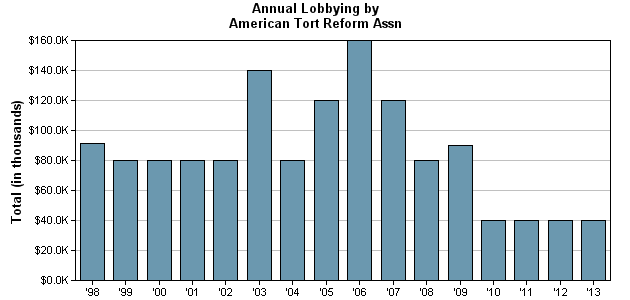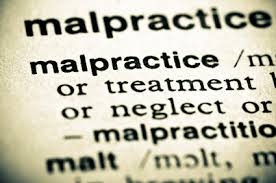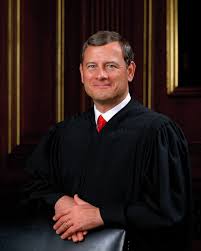Related Topics
Obamacare: Examination and Response
An appraisal of the Affordable Care Act and-- with some guesswork-- its tricky politics. Then, a way to capture major new revenue, even paying down existing Medicare debt, without raising premiums or harming quality care. Then, an offering of reforms even more basic, but more incremental. Finally, the briefest of statements about the basic premise.
What Can Supreme Court(s) Do About Tort Reform?

|
| Tort Reform |
For the better part of twenty-five years, I was a member of several physician study groups assigned to find some solution to the malpractice crisis. During that time, all manner of solutions were suggested or even tried out, and it would be my observation that only one of them seemed to work. That exception was a restraint on "pain and suffering" awards. In the past, we had tried arbitration panels, blue ribbon courts, and a wide range of proposals from the defense bar, designed to help them win cases. Nothing seemed to help the situation, which was always the number one complaint from surgeons, until California imposed a $250,000 cap on damages for pain and suffering and both awards and damage suits dropped significantly. That's legal jargon for a top limit to the amount of an award for pain and suffering, imposed on top of 'economic' damages, which are the awards for medical treatments actually incurred by the plaintiff. In the course of these discussions, I learned that it was customary to make these awards for non-economic damages based on medical costs. "Seven times the medicals" would be a typical offer in a negotiated settlement.
The history of this curious approach seems to have been the appeal to the judge, that if only economic costs were considered, the patient still would not be made whole, because the award would not cover his legal costs, which were usually 25-50% of the total, on a contingency basis. That is, the lawyer offered to work free of charge if he lost, but got 25-50% of the award if he won. From other investigations, I had discovered how hotly the trial lawyers would defend the contingency system, passionately proclaiming it allowed a poor man to have his day in court, so I tried to avoid that argument. My focus was, and is, that seven times the medicals are a somewhat overgenerous response to legal costs of a quarter to a half of the medicals. And it would be my surmise that the drop in California lawsuits following a limitation to awards for pain and suffering, reflected the fact that suits had been attractive at the overgenerous seven times level, but became unattractive when they declined to a more reasonable level. Stimulated by such surmises, it took very little investigation to discover that almost all high-figure awards were fairly exclusively for pain and suffering, while only a negligible amount of awards are for economic damages. Nuisance suits are in a different category, based on the insurance company estimate that a flurry of motions can usually run the defense costs up to the point where it is cheaper to settle than to defend a meritorious case. But even nuisance cases serve the purpose of paying to investigate a case, where it can be judged that ten nuisance cases may uncover one which has enough emotional appeal to a jury, to take a chance on trying the case. Therefore, a negotiated settlement of this issue between the two professions might justify a cap on pain and suffering, plus investigative costs of contingency cases equal to the economic damages.

|
| Malpractice |
That's the solution that appeals to me, but it does not propose a way to accomplish it. To argue this compromise with representatives of the trial bar is a waste of time unless they are threatened with some other solution which seems worse to them. As long as physicians are protected by insurance, they will not fight hard enough for any solution to be able to win it. The surgeons will seek ways to pass the costs through the reimbursement mechanism to the public, and the non-surgeons are not sufficiently threatened to cooperate. Ultimately, the public will have to recognize they are bearing almost all the costs of this conflict between professions, and direct public officials to do something about it. Whatever jurisdiction seems most appropriate begins to lose traction, here. Yes, the Legislative Branch is probably somewhat more appropriate, but from the beginning of our Republic, the legislature has been dominated by lawyers. Representation by physicians has in fact dropped considerably since the 18th Century, reflecting the vast increase in scientific progress, leaving them little free time for public service of the sort useful in a battle like this.

|
| John G. Roberts, Jr |
The person who comes to my mind is the Chief Justice. It is not commonly recognized that the Chief Justice, both of the United States and of individual states, has administrative control of the court system. Since most jurisdictions do not have monitoring and reporting systems useful for malpractice reform, these should be established. There is no great amount of judicial literature useful to a balanced analysis of this problem. There are no public forums for debating the matter which is not heavily sympathetic to one viewpoint or another, at least in the public view of it. And there are no fifty-one persons better positioned to appointing such review bodies, debating forums, and proposal-making -- than these fifty state Supreme Court Chief Justices, led by the Chief Justice of the United States. These Chief Justices already have the power to implement the necessary changes, but they lack public support for doing so. So the Chief Justice is the one person who can act, if he first orchestrates some mandate to do so.
It happens that the Chief Justice is already the head of the Judicial Conference, which includes the presiding officers of both state and federal courts. This might be an appropriate place to discuss Tort Reform, or for some reason, it might be better to appoint a special Task Force. One suggested approach might be to examine the usefulness of transferring hallmark cases to a special Federal Court of Appeal for Malpractice, or transferring particularly egregious awards to such a court, or constitute it as a special court of appeals for hallmark cases. That is, it is uncertain whether such a specially skilled court should be regarded as a way to untangle contentious issues, or whether it should be constituted as a punishment for outlandish judicial behavior. In one case, the policing power would be in the certiorari process, in the other, it would be by mandate from the Judicial Conference.
This is just a suggestion for adopting an approach which does not seem to have been used much. It was prompted by watching one particular State Chief Justice transform the malpractice environment of his state in a matter of a few months; I'm not sure how he did it, or whether I would approve of what he did. And after a year or two, things went back to the way they used to be. But the Chief Justices seem to have a role in this matter that needs to be explored.
Originally published: Thursday, January 23, 2014; most-recently modified: Friday, June 07, 2019